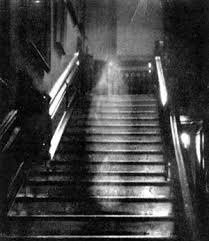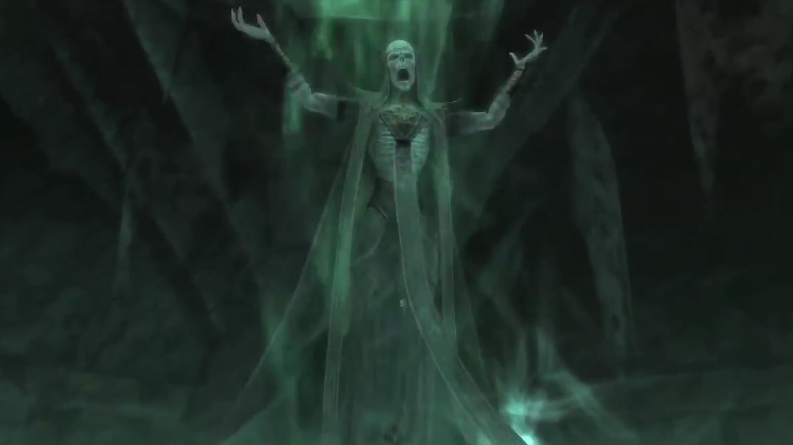Setting the scene
For those interested in ghost stories, witches, witchcraft and the legends of magical and mythical England, the Suffolk/Essex borders with the villages of Borley, Lavenham and Clare offering much of interest for the ghost hunter or sceptic. Lavenham has been the scene of perhaps the most horrifying of all films about the terrifying practice of witch-finding, as well as the setting for Godric’s Hollow in the Harry Potter films.
Lavenham, Hedingham or Framlingham are among the most likely locations for the final resting place of both the Holy Grail and the sword Excalibur, and Borley and Lavenham have many ghosts with Borley Rectory, The Swan and Tickle Manor appearing in the top ten most haunted places in Haunted Britain for example.
The village of Lavenham is also said to be cursed. It certainly sits within the heart of ghost country.
This collection sets out some of the best-known stories and legends of ghosts and witchcraft in or associated with Borley, Lavenham, Clare and neighbouring villages as seen from Lavenham’s tall church tower, both true and fantastical, where fact is often more remarkable than fiction.

seeking her dead Cavalier husband
A chilling welcome
Sitting to the south east of the village of Lavenham are the woods along the road to Brent Eleigh where the first Neolithic farmers settled at about the same time as Neolithic Rome was established, some 12000 years ago. This settlement almost certainly survived the two great floods that would wipe out most of the population of what is now East Anglia, with only those who had settled on hilltops surviving the huge tsunami that would split England from France a mere 10000 years ago. So devastating was the first flood that it remained in the ancestral memory of our settlers, who stayed on their hill top camp and made no attempt to farm the lands below. Indeed, during the flood, their settlement would have been an island surrounded by water and fear of a repeat of such a flood must have influenced how our ancestors lived for centuries.
When the River Po burst its banks resulting in the destruction of the only cities in our world some 6000 years later, again there would have been some flooding of the valleys around Lavenham. So devastating was this second flood that written records from the civilisation of Ur, the first cities in the world, disappeared for two hundred years, only for those records to commence again in the time of King Gilgamesh II.
Those fortunate to have camped in Lavenham and Eleigh’s woods tell stories of the spark of flints and shadows among the trees as the spectres of our first residents still look down over what the village of Lavenham has now become.
Turning south and west you can see the straight line of the Roman Road that skirts around the village. To the north of the road is the mound where it is thought that druids buried their sacrificial victims. Fear of the spirit of this place would see the Romans avoid settling in Lavenham almost totally. Accounts of druid’s mounds found elsewhere in the Roman Empire indicate that the druids themselves would usually be tortured and then crucified on their mounds. Even so, any Roman coming in sight of the mound would make the sign against the evil eye (and some still do to this day).
As the morning mist rolls back, you can occasionally hear the chink of the armour and the distinctive glint of metal as the sun reflects off the breast plates of the marching cohorts, all hurrying to get past the dread of the place.
Further west, beyond the church tower, is the ‘new’ Lavenham Hall, believed to be on the site of one of the two Saxon Hall Houses that formed part of the Anglo Saxon village of Laffa’s Ham. In the fields beyond where the village Carnival is held each year are the burial mounds of those Saxons, sitting in a circle around a small pond, haunted by the skeletal and spectral figures of barrowwights.
Their whistling, screaming cry can be heard most Autumn mornings especially at the time of an old moon. This is commonly mistaken for the cry of a banshee. Burning a fire of hazel and oak on the night of the first Harvest Moon is said to summons the wights from their mound to take captive anyone so foolish as to do so.

Even further west and slightly north are the remains of the ‘old’ Lavenham Hall also called ‘The Lodge’. On the 28th August each year, the spectres of the hurrying young Aubrey de Vere and his family can be seen as they packed their bags to leave the country for Holland after the parliamentary victory at Colchester.
Lavenham was heavily supportive of Cromwell and the Eastern Association, with Aubrey’s friends offering the only resistance. The total and devastating defeat at Colchester would see Aubrey depart to be with the King’s son, only to return in 1651, when he was sent to the Tower of London without benefit of a trial (Cromwell had suspended the Magna Carta on the basis that it had always been written to bind Kings but never Parliament).
Next is the graveyard and chapel of rest; an island of peace amidst the ghosts of our village but with the frightening stones of the plague graves around the porch door. Opposite is our church (a magnificent monument built in thanksgiving for the Lancastrian victories at Bosworth and Stoke Field, subsequently enhanced in honour of Henry VII on his death by rich merchants in the village such as the Spring family and John de Vere, 13th Earl of Oxford).
The south door, facing towards Acton and Sudbury, has symbols that represent the furthest west location of the famous ‘oyster trail’, as well as a representation of the Grail. Beneath the tower is thought to be one of the last resting places of the Grail and also of the Spear of Longinus, painted in the possession of the Spear Shaker’s heir, Horace de Vere, Baron Tilbury, ancestor of the Arthurian Knight of the Round Table, Bedevere. It is more likely that the spear is buried with Horace in his magnificent tomb in Westminster Abbey as he was buried in full armour.
Much further north we see Frogs Hall Road and the fields where the parliamentary troops would practice their artillery fire (their stone cannon balls can still be found in those fields). Not all returned to our village from the siege of Colchester and some of the dead ask still to be remembered as they continue to practice with musket and cannon.
Yet further north and west and we can just see the Second World War airfield and its control tower. There are many eye witness accounts of the sound and shadows of the B24s and B17s that were based there coming in to land out of clouds or the morning fog, seeking to return at long last after their raids of Germany and Holland over 70 years ago.

As we follow the Railway Track to the east, passing the remains of the signal box where an employee of the Great Eastern Railway met his death when encountering a ghost, we can see Borley and Clare, and the path trod by the Giant that haunts Lavenham Park at night wresting cloaks, hats and scares off the unwary.
To our north is Bury St Edmunds, happy home to many ghosts, to our south is Sudbury with its cursed cat and bishop’s skull whilst across to Hadleigh in the east is Kersey and its story of a time slip.

And now we turn back to enter the Norman, medieval, Tudor, Georgian and Victorian village: a show place for innovative architecture from the 13th to the 21st centuries … and the residence for many spirits and ghosts.”
In this section of the web page, we will read of the curse placed on the village, of the Witchfinder General and the sad story of the only ‘witch’ from Lavenham to face trial and be burnt, the ghost of the Cavalier who never came home from the siege of Colchester and still climbs a staircase that has long since been removed, the beautiful but sad lady who haunts one of our shops, the housekeeper who haunts a room at the Swan, the giant ghostly white rabbit or the green children.
We meet ‘Boy’ who haunted more than one house and may still haunt others, the ghost of the Angel linked to its sign and of a former inn-keeper at the Angel, ‘Becky’ who haunts the cross hall at De Vere House, the ghosts of Francis and Henry de Vere, the curse of one family hounded by a reflection in the pond before Lavenham Hall and of the doppelganger at Wixoe.
Welcome to Spooky Suffolk
